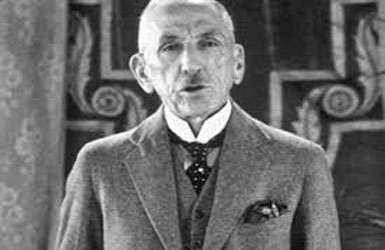Billy Hughes

William Morris (Billy) Hughes, a former Australian politician was born on 25 September 1862 at Pimlico, London. He was sworn in as the seventh Prime Minister of Australia in 1915 and held office until 1923.
Early life, Education and Political life:
He was the only child of William Hughes and Jane Morris. He did his schooling at the local grammar school and when he turned 14 he started his career as a pupil teacher at St Stephen's Anglican School, Westminster. After migrating to Brisbane in 1884, he tried his hand at a variety of jobs such as railways tally clerk, well sinker, farm labourer, rock breaker, boundary rider, blacksmith's striker, swagman and cook on a coastal ship. He got the job of Australian Workers' Union organizer in 1893 and later on 17 July 1894, he was elected to the New South Wales Legislative Assembly. He switched parties 5 times- from Labor (1901) to National Labor (1916) to Nationalist (1917) to Australian (1930) to United Australia (1931) to Liberal (1944). He is considered as the longest-serving member in the history of the Australian Parliament. He served briefly as Minister for External Affairs in John Christian Watson's Labor government. He was part of Andrew Fisher's three Labor governments; first as Attorney-General and Deputy Prime Minister in the next two.
During his tenure as a Prime Minister he strongly supported Australia’s participation in the First World War. He proved himself to be a war leader and was named "Little Digger”. He remained a controversial figure throughout his life and is still remembered for his witty sayings, patriotism and for his irrepressible optimism. His political and diplomatic skills were indeed praiseworthy.
Personal life:
WilliamHughes and Elizabeth Cutts got married in 1886 in Sydney. The couple when gone for a long drive met with an accident, near the level crossing north of Albury, New South Wales. Hence it is named the Billy Hughes Bridge. William Hughes and Elizabeth Cutts had seven children.
He died on 28 October 1952 at Lindfield and was buried at Northern Suburbs Cemetery, Sydney.
The honours bestowed upon him include KC (1919), Privy Councillor (1916), Grand Officer of the Legion of Honour and Companion of Honour (1941). Australia Post issued a postage stamp featuring his portrait in 1972. He was a member of Balmain and Sydney Mechanics School of Arts debating societies (1892–) and Waterside Workers Federation (1899–1916).
| 7th Prime Minister of Australia | ||
|---|---|---|
| In office | 13 July 1945– 19 December 1949 | |
| Monarch | George VI | |
| Governor General | The Duke of Gloucester Sir William McKell | |
| Preceded by | Frank Forde | |
| Succeeded by | Robert Menzies | |
| Member of the Australian Parliament for Macquarie | ||
| In office | 21 September 1940– 13 June 1951 | |
| Preceded by | John Lawson | |
| Succeeded by | Tony Luchetti | |
| In office | 17 November 1928– 19 December 1931 | |
| Preceded by | Arthur Manning | |
| Succeeded by | John Lawson | |
| Personal details | ||
| Born | 22 September 1885 Bathurst, New South Wales, Australia | |
| Died | 13 June 1951 (aged 65) Canberra, Australian Capital Territory, Australia | |
| Political party | Labor | |
| Spouse(s) | Elizabeth McKenzie | |
| Children | None | |
| Religion | Roman Catholicism | |
- John Curtin
- Alfred Deakin
- Sir Edmund Barton
- Andrew Fisher
- Arthur Fadden
- Ben Chifley
- Billy Hughes
- Chris Watson
- Frank Forde
- Gough Whitlam
- Harold Holt
- James Scullin
- John Gorton
- John McEwen
- Joseph Cook
- Joseph Lyons
- Julia Gillard
- Kevin Rudd
- Malcolm Fraser
- Paul Keating
- Sir Earle Page
- Sir George Reid
- Sir Robert Menzies
- Stanley Bruce
- Tony Abbott
- William McMahon
- John Howard
- Bob Hawke
Australian Prime Ministers
Types Of Visas
Public Holidays
- Australia Day Replacement
- Launceston Cup
- King Island Show
- Tasmania Public Holidays
- Queensland Public Holidays
New Seven Wonders
Immigration Info
- Migrating to Australia
- State Migration Sites
- Immigration Points Calculator
- Protect Yourself from Migration Fraud
- Immigration Advice
Famous Australians
Awards In Australia
Australian Universities
- Charles Darwin University
- University of Western Australia
- University of South Australia
- Queensland University
- University of Tasmania
Australian Prime Ministers
Australian Holidays
Australian History
- Settling in Australia
- Studying in Australia
- List of Cities in Australia by Population
- Shark Killing in Australia Developments
- Australia Time Zones
Australian High Court Judges
Australian Government Structure
- Department of the Treasury
- Department of Veterans' Affairs
- Department of Sustainability, Environment, Water, Population and Communities
- Department of Regional Australia, Regional Development and Local Government
- Department of Infrastructure and Transport

